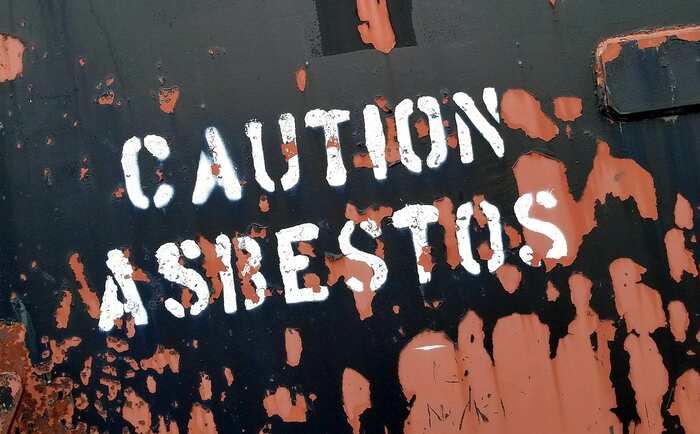Managing asbestos in a building is not a one-time effort—it requires ongoing attention and periodic reviews to ensure continued safety. Once an initial asbestos survey has been completed and a management plan is in place, regular re-inspections become essential to maintaining control over asbestos-containing materials (ACMs). These re-inspections check the condition of known ACMs to confirm they have not deteriorated or been accidentally disturbed. Without routine follow-up, even well-managed asbestos can become a hidden danger over time. Understanding the importance and frequency of re-inspections helps building owners stay compliant with safety regulations and protect the health of occupants.
The importance of regular re-inspections
1. Why Re-Inspections Are Necessary
Asbestos is stable when undisturbed, but its condition can change due to age, environmental factors, or maintenance activities. Over time, materials that once seemed secure may begin to degrade, increasing the risk of asbestos fibers being released into the air. Regular re-inspections are necessary to detect signs of wear, damage, or disturbance before they become hazardous. These inspections also ensure that control measures, such as encapsulation or signage, remain effective and intact. Companies like Supernova Asbestos Surveys highlight that re-inspections are critical to proactive asbestos management, allowing property owners to respond quickly to any changes. By keeping a close eye on ACMs, building managers can maintain a safe environment and avoid unexpected safety issues or regulatory breaches.
2. Recommended Frequency of Re-Inspections
The general recommendation for asbestos re-inspections is to conduct them at least once every 12 months. This annual review provides a consistent check on the condition of ACMs and ensures compliance with legal obligations. However, the exact frequency may vary depending on the building’s use, the type and condition of the asbestos materials present, and any history of disturbances or incidents. For buildings with high activity levels or frequent renovations, more frequent inspections may be advisable to catch potential issues sooner. Conversely, slightly longer intervals may be appropriate in buildings with minimal activity and well-protected ACMs, but never so long that materials are allowed to deteriorate unchecked. Consulting with a qualified asbestos surveyor helps determine the most suitable schedule based on the specific risks and conditions of the property.
3. What Happens During a Re-Inspection
A typical asbestos re-inspection involves thoroughly reviewing all previously identified ACMs within the building. Surveyors revisit each location in the original asbestos register, visually examining the materials for any signs of damage, wear, or tampering. They check the effectiveness of existing control measures, such as barriers, encapsulation, and warning labels, to ensure they are still in good condition. Detailed notes and photographs are taken to document any changes, and the asbestos register is updated accordingly. If any materials are deteriorating or at increased risk of disturbance, the surveyor may recommend further action, such as repair, additional monitoring, or removal. The process is systematic and designed to provide a clear, current understanding of the asbestos risk within the building.
4. Updating the Asbestos Management Plan
After a re-inspection, the asbestos management plan must be updated to reflect new findings. This document is a roadmap for keeping ACMs safe and compliant over time. Updates may include revised risk assessments, new control measures, or adjustments to the monitoring schedule based on the current condition of the materials. Clear records of all inspections and maintenance activities should be kept on file to demonstrate compliance with safety regulations. An up-to-date management plan also ensures that contractors and workers have access to accurate information when planning maintenance or renovations. Maintaining an accurate, current plan is essential for protecting building occupants and avoiding legal or financial penalties associated with non-compliance.
5. Benefits of Staying on Top of Re-Inspections
Consistent asbestos re-inspections offer peace of mind for building owners and occupants alike. They help prevent unexpected exposure incidents by ensuring that any changes in the condition of ACMs are detected early and addressed promptly. Staying current with inspections also strengthens a property owner’s legal position, showing a clear commitment to safety and due diligence. Regular oversight may even extend the life of ACMs, as minor repairs or adjustments made in response to inspection findings can prevent larger problems down the line. In addition to safeguarding health, routine inspections contribute to smoother operations, allowing maintenance and renovation work to proceed with confidence that asbestos risks are under control.
Prioritizing Safety Through Regular Monitoring
Asbestos re-inspections are a vital part of any comprehensive asbestos management strategy. By scheduling these reviews regularly—typically every year—building owners can ensure that asbestos-containing materials remain safe and that any changes are quickly identified and addressed. Re-inspections keep management plans accurate and ensure that legal responsibilities are being met. With careful attention to monitoring and documentation, property owners protect the health of everyone who uses the building while preserving its long-term safety and compliance. Prioritizing regular asbestos re-inspections is a practical and responsible step toward maintaining a safe and secure environment.


